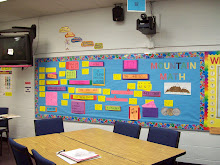This week in our reading, we explored two different instructional strategies that embed technology which is "Reinforcing Effort" and "Homework and Practice". While exploring these two different examples of Behaviorism-Based Technology, "Pitler, Hubbell, Kuhn and Malenoski (2007) states that "Reinforcing Effort" enhances students understanding of their effort and achievement while at the same time helping the student to address their beliefs about their learning. Also, "Homework and Practice" allows the student to review and practice what has been taught in the classroom and display what they have learned through practice and homework." The behaviorist learning theory focuses on reinforcement and punishment. Therefore, I believe homework and practice should be used as reinforcement for the student but should never be used as punishment for any student. Students should be allowed to work with homework and practice at their own pace and should never be overwhelming to the student. Dr. Orey (2009) mentions that teachers should reinforce the behavior they want to see through reward and punish the behaviors they don't want to see. Therefore, the environment should accommodate the behaviors the teacher wants to see.
In our classrooms as I mentioned before, I students practice math facts on a daily basis. After practicing the math facts, they are given a certain group of facts they should know each week. The students are given a pre-test over the math facts and they they can practice for a week and then they take the post test over those same facts. Students are encouraged to create flashcards so they can work on the ones they don't know until the post test is given. Therefore, the website: http://classroom.jc-schools.net/basic/math.html would be very beneficial to my students because it has several websites list that will help the students practice their facts and also students could use these same website at home for reinforcement of those facts they have studied already in the classroom. We also use graphs were the students keep track of their performance from pre-test to post-test. Students are able to look at the graph and see their improvement and downfalls if any. Likewise the teacher can use view the graphs and keep track of student performance as well, so we can know how to help the student make improvements if needed. Pitler, Hubball, Kuhn, and Malenoski (2007) mentions as an extension of the classroom, homework provides opportunities for students to deepen their understanding of the content and to gain proficiency with their skills.
Pitler, H., Hubbell, E., Kuhn, M., & Malenoski, K. (2007). Using technology with classroom instruction that works. Alexandria, VA: ASCD.
Laureate Education, Inc. (Executive Producer). (2009). Bridging Learning Theory, Instruction, and Technology. [DVD]. In Designing curriculum and instruction. Baltimore: Author.
No Means NO!
9 years ago




I also agree that homework should be used as reinforcement of the material taught in class. I also have never thought that teachers should assign homework as a punishment, but if the student does nto finish the work in class because of behavior issues then yes I feel that the teacher should require it to be completed at home. This is so that the students can complete the in class reinforcement and also determine any questions that they have before the teacher moves to the next topic.
ReplyDeleteJennifer
I totally agree with the fact that if a student does not complete in class assignments, they should complete them at home. Students will definitely have time to write down any questions they may have so they can be addressed the next day and before the next topic is taught.
ReplyDeleteAmy, I think using graphs to help students see their improvements is a great resource and it helps show how students how much their efforts relate to their progress in class. I also think the graphs provide an excellent tool of communication when working with your parents during conferences. It provides a quick visual for parents to easily see the growth and progress of their students over a period of time. The graphs are especially helpful with our English language learners. Thanks for sharing your ideas. I will definitely try to use more graphs as a form of communication with my students and their families as well.
ReplyDeleteHi Amy,
ReplyDeleteI am required to keep track of my RTI math students' progress monitoring using EXCEL. Until I read this week's resources, I never thought of using graphs for them to monitor themselves. I think it is a wonderful idea that will generate more enthusiasm and effort.
I am also looking forward to creating concept maps for them to use to remember long division, geometry concepts, and fractions/decimals. I think it will be a bit of a challenge to create them, but they will help make more connections, which these students need.